#Chabot Museum
Explore tagged Tumblr posts
Text
VOOR WERNER BERG IS HET LEVEN KUNST, KUNST HET LEVEN
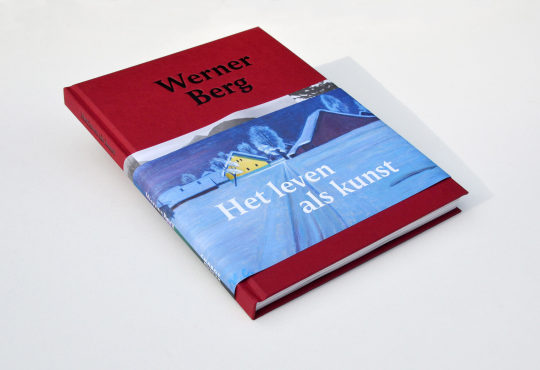
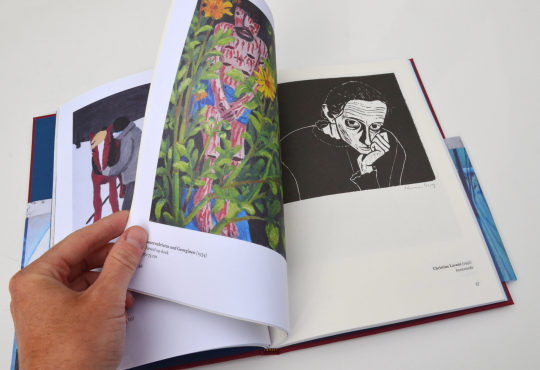
Lezende het boek "Werner Berg, een leven als kunst" dringt mij de naam Leon Adriaans op. Niet dat het werk van beide kunstenaars met elkaar overeenkomt. Maar wel de manier waarop het is ontstaan. Beide zijn boer en hebben een hard bestaan waarin de kunst een prominente plaats inneemt. Het leven is kunst, kunst is het leven. De dagelijkse bezigheden zijn bijzaak, hobby. Door het solitaire leven op het platteland en de werkzaamheden in het boerenbedrijf kan die kunst een eigen leven leiden. Nauwelijks beïnvloedt van buitenaf kan de kunstenaar zichzelf in de kunst ontwikkelen. Bij beide kunstenaars merk ik die liefde voor de omgeving waarin zij verkeren.

Adriaans schilderde in een weerbarstig boers dialect, zoals zijn leven getekend werd door akkers, modder en stevige paardenlijven. De Brabantse kunstenaar werkte in een naïeve stijl die rauw en robuust oogt zoals zijn landleven dat is. De kunst van Berg heeft net zo die simpele aanpak, daarin klinkt echter een poëtische beeldtaal. Daarmee drukte hij het ontzagwekkende van het menselijke bestaan, de verpletterende krachten van de innerlijke en uiterlijke natuur, het mythische, de menselijke oerangst uit. De emotie van de mens in zijn eenvoudige bestaan. Werner Berg was verliefd op zijn Rutarhof in de Oostenrijkse bergen, ver van de drukte en het lawaai die de dan moderne mens bij zich draagt, en liet dat ronduit meespreken in zijn werk. "Het waren helemaal geen romantische ideeën die mij ertoe hebben verleid mij op die berg te vestigen, ik wilde alleen maar onafhankelijk kunnen leven en werken." Met deze opmerking uit 1934 start het boek waarin ik diezelfde hang naar zelfstandigheid teruglees als die de kunst van Adriaans kenmerkt.
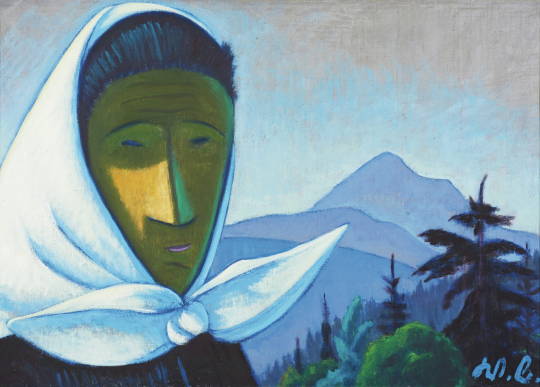
In een expressionistische stijl gaf Werner Berg blijk van de inspiratie die hij in zijn omgeving vond. Vanuit zijn atelierraam keek hij op de oprijzende Hochober en de keten van Karawanken, over het bos en achter het dal met verspreide dorpen de bergen van Karinthië en Stiermarken. “De schoonheid en vooral de veelvormigheid van het landschap vlak om ons heen is onbeschrijfelijk.” Er zijn vast meer verbanden te maken met andere kunstenaars, die eveneens in een min of meer afgezonderde positie hun werk tot stand laten komen. Maar het landleven van Berg echoot voor mij in dat van Adriaans. Ze zijn geen generatiegenoten, hun leven overlapt zich enigszins. Maar de ervaring en het beleven komt mijns inziens overeen en sluit op elkaar aan.
Het werk van Werner Berg is voor het eerst te zien in Nederland. Buiten zijn zo geliefde Oostenrijk, waar hij hoog op een berg bij leven aan zijn oeuvre heeft gewerkt. Naast het zware en uitputtende werk op het land, was er altijd en maakte hij aldoor tijd om te tekenen en te schilderen. Het Chabot Museum in Rotterdam is plaats van handeling om de kunst van Berg te tonen. De naamgever van dit museum, Henk Chabot, wordt zowel fysiek als in een bij de tentoonstelling uitgegeven catalogus in relatie gebracht met het werk van Werner Berg. Er worden overeenkomsten bloot gelegd, verbindingslijnen uitgezet en verbanden gemaakt. Volgend jaar zal dat andersom gebeuren wanneer werken van Chabot getoond zullen worden in het Werner Berg Museum in het Oostenrijkse Bleiburg.
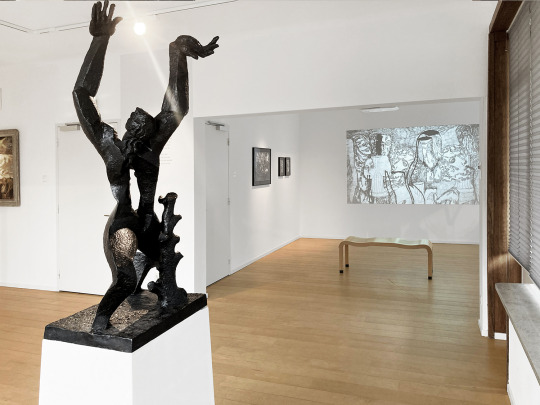
Ook de kunst van Ossip Zadkine krijgt een plek in Rotterdam. Het was in 2023 namelijk 70 jaar geleden dat het bekende beeld ter herinnering van het bombardement werd onthuld. Werner Berg heeft dat werk "de verwoeste stad" ooit gezien tijdens een kunstreis naar Nederland. Hij beschreef het beeld als 'misschien wel het enige geldige monument van onze tijd'. Daarmee schept het een band en kunnen beide kunstenaars optrekken in tentoonstelling en catalogus. Maar meer nog is Henk Chabot hier op de plek. Hoewel de geïnspireerde uitbeelding van landschap en stadsgezicht verschilt bij de kunstenaars, is er een overeenkomst te bespeuren in het vastleggen van een gevoel. In de expressie schuilt de emotie, de liefde voor de omgeving. Werner Berg is dan wel doende op de hoogten van Oostenrijk waar Henk Chabot zich in de delta van het laagland uitleeft, maar het een is toch een blauwdruk voor het andere.
De naam van Henk Chabot vind ik terug in de onlangs door mij besproken uitgave "De Vuurvogelgeneratie" van Sandra Smets. Dit boek is het resultaat van een onderzoek naar kunst en kunstenaars in de verwoeste stad Rotterdam, tijdens en na de oorlog. Chabot bewoont even buiten de stad een klein huis met atelier aan de rivier de Rotte. Daar is hij boer tussen de boeren. Legt die hardwerkende landarbeiders met hun bonkig karakter indrukwekkend vast. Exemplarisch voor een eenvoudig en tijdloos leven. Hij beoogt daarmee zowel een romantisering van het platteland als een erkenning van het zware boerenbestaan. Minder poëtisch in vergelijking met Berg, maar met eenzelfde realistische expressie.
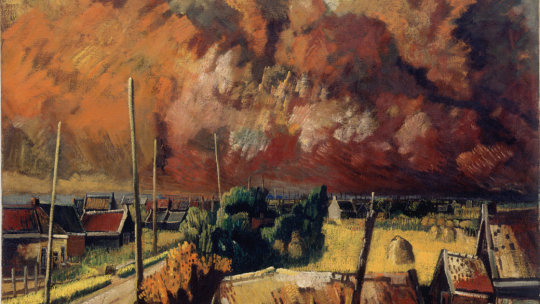
Vanuit zijn huis aan de dijk heeft Chabot een ruime blik op stad en haven. Hij heeft het bombardement als het ware in zijn achtertuin zien voltrekken en heeft daar niet veel later getuigenis van afgelegd in het woeste schilderij 'Brand van Rotterdam'. Zijn jongere broer Wim, op aanraden van Henk eveneens kunstenaar, is al zijn kunstwerken en schildersmateriaal in het inferno kwijtgeraakt. En ook een groot deel van Henks’ schilderijen, die hij in het atelier van Wim had opgeslagen, ging verloren. Dat leek hem vanwege de oorlogsdreiging en de naderende mobilisatie een veiliger plek dan het atelier in zijn dijkhuis.
Terwijl kunstenaars tussen de puinhopen na het bombardement de ravage op papier documenteerden, liet Chabot zich inspireren juist door de mensen in hun armoede en ongeluk. Dat scherpe oog en die nauwlettende opmerkzaamheid voor de expressieve emotie van de mens komt dramatisch tot uiting in een serie schilderijen met vluchtelingen, vervolgden en illegalen als modellen. De angst en ontreddering is van de ingevallen hongerig ogende gezichten af te lezen. Chabot weet de verontrustende mimiek van verschoppelingen tastbaar en invoelbaar vast te leggen. Zijn kunst drukt het ware gevoel uit, de essentie van een pijnlijke tijd. Juist door die emotioneel doorwrochte kunst maakt het oorlogsoeuvre van Henk Chabot naderhand veel los.
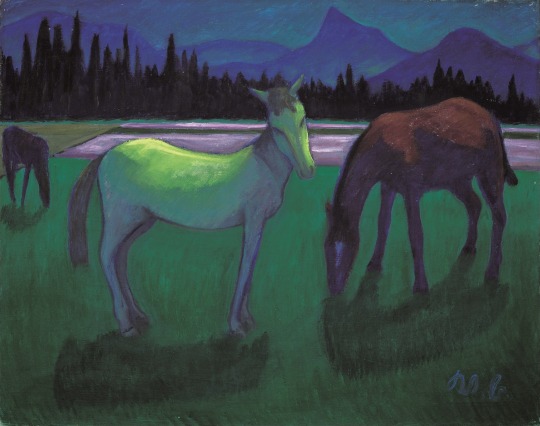
De belangstelling voor het land, de polder en de natuur deelt Chabot met Berg. Op zijn beurt, die van Berg, uit zich dat in de bergen en de dalen. Maar vooral de mensen die leven en werken in dat landschap hebben plek in expressionistisch geschilderde impressies. Ook die inspiratie delen beide kunstenaars wiens werk voor het eerst in Nederland aan elkaar wordt voorgesteld. Chabot zet de mens in het landschap neer met een zware contour om die figuur in de wereld extra te benadrukken. Waar Berg in een meer naïef versimpelde stijl de mens en zijn omgeving vastlegt. Wel spreekt er eenzelfde empathie bij de mens en aan de natuur uit. “Hoeveel het landschap ook voor mij betekent en hoeveel vreugde ik ook aan bloemen beleef, toch staat de mens centraal in mijn werk – is eigenlijk het thema van mijn schilderkunst.”
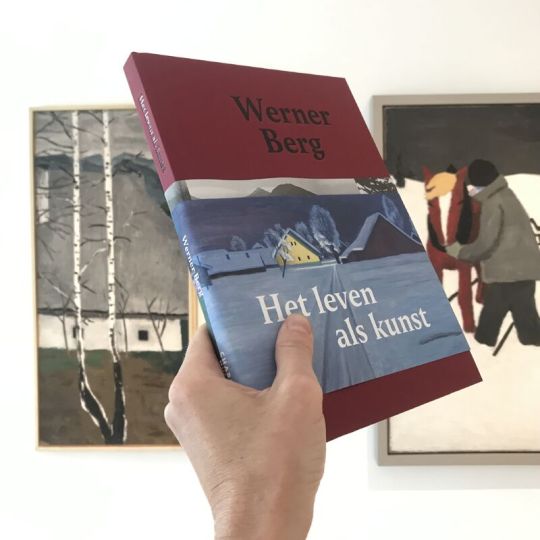
Het boek “Het leven als kunst” neemt mij in teksten en beelden mee door het kunstenaarsleven van Werner Berg. Zijn levensverhaal laat zich lezen als een roman, aldus wordt boek en tentoonstelling in een folder aangeprezen. Alle ingrediënten zijn aanwezig: een getalenteerde hoofdpersoon met diepe zielenroerselen die het bruisende leven van de grote steden achter zich laat, een grote liefde én een onmogelijke liefde, twee wereldoorlogen en een schilderachtig decor van het afgelegen gebergte in Karinthië. De uitgave zou een autobiografie kunnen zijn, want veel uitspraken van Berg zelf krijgen plaats tussen de getoonde schilderijen, tekeningen, aquarellen en houtdrukken. Een voorwoord van Jisca Bijlsma, directeur Chabot Museum, geeft het boek de status van catalogus bij een tentoonstelling. Ria van Hengel belicht de dichter Christine Lavant, die met haar poëzie de belevingswereld van Werner Berg binnenkwam. Hij was meteen diep onder de indruk van haar gedichten en van haar persoon. De dichter werd muze van de schilder. Er ontstond zelfs een liefdesrelatie, maar deze hield geen stand omdat Berg al getrouwd was. Hij dacht dat beide liefdes wel samen konden gaan in zijn leven, want hij aanbad ook zijn vrouw. Maar voor de twee vrouwen was dat onleefbaar, dus Lavant vertrok. Verder in het boek laat de samensteller Berg de tussenbalans van een schilderbestaan opmaken. “Een leven in grote eenvoud leiden, daarmee bijvoorbeeld kun je veel bereiken.”
Werner Berg. Het leven als kunst. Teksten: Werner Berg, Jisca Bijlsma, Ria van Hengel. Uitgave: Chabot Museum Rotterdam, 2023.
0 notes
Text




2023, Georgia O'Keeffe's bedroom in Abiquiu, NM, my photos
Last summer I toured her home and studio and took a ton of pics. I keep thinking about the comfortable simplicity of her bedroom and the view she woke up to every morning. The unique kiva fireplace - open sided with such a small base. Her bedroom was next to her studio.
The tour was wonderful. I'd do it again. "The 5,000-square-foot compound was in ruins in 1945 when she purchased the home from the Catholic Church. For the next four years, O’Keeffe supervised its restoration, which was carried out by her friend, Maria Chabot. O’Keeffe finally made Abiquiú her permanent home in 1949. The special character of the property, a quiet sanctuary from which to draw inspiration, perfectly suited O’Keeffe’s needs. O’Keeffe lived in the home from 1949 until 1984. She died in Santa Fe on March 6, 1986, at the age of 98. The O’Keeffe Home and Studio was designated a National Historic Landmark in 1998 and is now part of the Georgia O’Keeffe Museum."
5 notes
·
View notes
Text
Portico Oakland Waterfront in Oakland, CA
The existence of Portico Oakland Waterfront is a huge favor for the people in Oakland, CA. Well, it exists for those who are looking for chic two bedroom apartments in Brooklyn Basin area. Why is it highly recommended to rent a two-bedroom property? Well, young families can have an amazing start of a posh lifestyle in doing so. In addition, it is interesting to note that you can immerse yourself in Oakland's rich cultural tapestry, culinary treasures, and recreational opportunities, all within arm's reach of your waterfront retreat at Brooklyn Basin. Besides, Portico is a remarkable place to come home to since it has elevated features at every turn and rich finishes all over the apartment complex.
Oakland, CA
Are you thinking about pre-scheduled activities today? Well, it’s perfect if you visit Oakland, CA in the coming days. There are also future events in Oakland, CA area, that are posted on Eventbrite for you. First, there will be Lakefest Official after Party Presented by Toasted Life this coming Saturday, June 22, 2024, at around 8:00 PM at Crybaby. Second, the free event named Thirsty Cast/Crew Screening is scheduled on Thursday, June 27, 2024, at around 6:30 PM at The New Parkway Theater. Lastly, you can also opt to attend the OICC Summer Gospel Concert on Friday, June 28, 2024, at around 7:00 PM at First Congregational Church of Oakland.
Oakland Museum of California in Oakland, CA
Have you visited the Oakland Museum of California in Oakland, CA before? Many backpackers worldwide go there to learn new things. Knowing that the mission of the Oakland Museum of California is to inspire all Californians to create a more vibrant future for themselves and their communities, guests will surely have a memorable visit in the tourist spot. When the Oakland Museum of California or OMCA first opened its doors fifty years ago, it brought together three historically independent disciplines such as art, history, and natural sciences all under one roof. Then, it’s also interesting to note that this progressive multidisciplinary approach was to celebrate the many facets of California. What do you think?
Bond for Oakland cultural institutions placed on November ballot
Nowadays, there are many interesting news reports in Oakland, CA. In a recent news article, there was a topic about a bond. Basically, it was mentioned in reports that the Oakland City Council voted unanimously on Wednesday to place a $182 million bond on the November ballot to benefit five of the city's cultural institutions. By the way, if it’s approved by voters, the money would be spent on infrastructure projects at the Chabot Space and Science Center, Children's Fairyland, the Oakland Museum of California, Peralta Hacienda Historical Park and the Malonga Casquelourd Center for the Arts. Lastly, such projects could include rehabilitation, construction, safety and security, exhibits and collections storage and visitor amenities, among other things.
Link to maps
Oakland Museum of California 1000 Oak St, Oakland, CA 94607, United States Head southeast on 10th St toward Laney College Sidewalk 0.4 mi Turn right onto 5th Ave 0.3 mi Turn left onto Embarcadero 0.1 mi Turn right onto Brooklyn Basin Way Restricted usage road 0.1 mi Turn right onto 8th Ave Destination will be on the right 492 ft Portico Oakland Waterfront 37 8th Ave, Oakland, CA 94606, United States
0 notes
Text






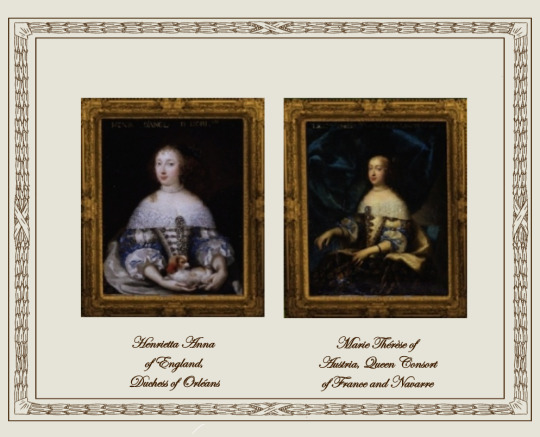
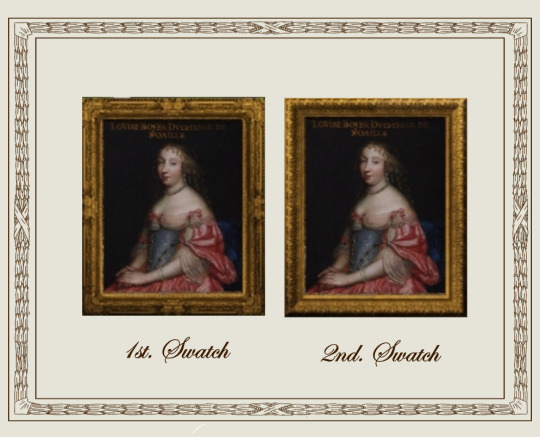
Louis XIV's Gallery of Beauties
A retexture by La Comtesse Zouboff — Original Mesh by @thejim07
This set of 20 portraits was comissioned by the king himself in the 1650s to Charles and Henri Beaubrun (except for a portrait of Henrietta Anna of England, Comissioned to Nicolas Mignard) The portraits comprises the queen, royal princesses and ladies of the court. They hanged at the king's appartments at Versailles. In the 1670s the paintings were progressively relegated to the king's minor residences, but in 1837, Louis-Philippe, King of the French turned Versailles into a museum and rejoined the paintings, in the Louis XIV Rooms, where they remain.
The set includes 20 portraits, with the original frame swatches, fully recolorable. The portraits are of:
Anne Genèvieve de Bourbon, Duchess d'Estouteville and Longueville
Françoise-Athénaïs de Rochechouart (later, Marquise de Montespan)
Anna Martonozzi, Princess of Conti
Anne Louise Boyer, Duchess of Noailles
Anne Marie Gonzaga, Countess Palatine
Anne de Rohan-Chabot, Princess de Soubise
Catherine Henriette d'Harcourt, Duchess d'Arpajon
Catherine de Neuville, Countess d'Armagnac
Charlotte Catherine de Gramont, Proncess of Monaco
Charlotte Isabelle Angélique de Montmorency-Bouteville, Duchess of Mecklenburg-Schwerin
Elizabeth of Orléans, Duchess of Guise and Joÿeuse
Françoise Madeleine d'Orléans (née de Valois) Duchess of Savoy
Françoise Mignot, Mareschalle of l'Hospital
Françoise de Neufville, Duchess of Chaulnes
Gabrielle-Louise de Saint-Simon, Duchess of Brissac
Henrietta Anna of England, Duchess of Orléans
Madeleine-Charlotte d'Albert-d'Ailly, Duchess of Foix
Marguerite Louise d'Orléans, Grand Duchess of Tuscany
Marguerite-Louise-Suzanne de Béthune-Sully, Countess of Gyche
Marie Thérèse of Austria, Queen Consort of France and Navarre
Found under Decor > Paintings for 940 §
Retextured from the "portrait of Anne Marie Louise d'Orléans", found here
Table, torcheres and floor by @thejim07
Rest of the decor by @joojconverts
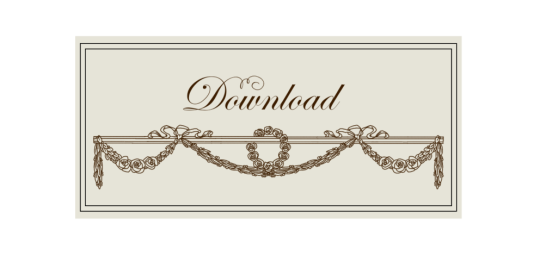
Drive
(Sims3pack | package)
(Useful tags)
@joojconverts @ts3history @ts3historicalccfinds @deniisu-sims @katsujiiccfinds
-------------------------------------------------------
#the sims 3#ts3#sims 3 cc#portrait#s3cc#sims 3#sims 3 download#sims 3 cc finds#palace of versailles#sims 3 decor#wall decor
44 notes
·
View notes
Photo


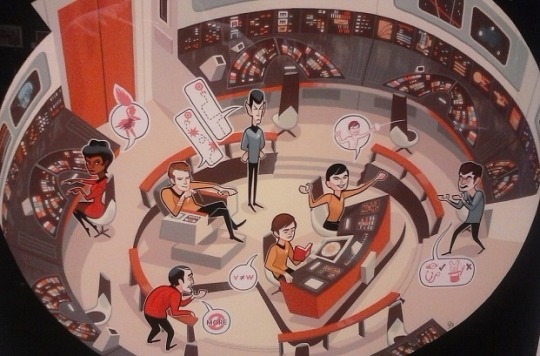
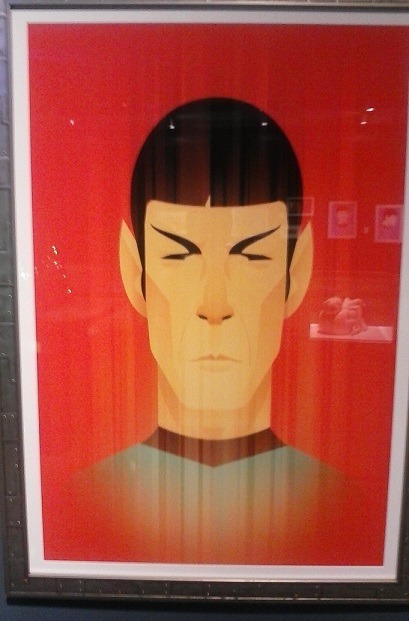
Art from the Star Trek 50th Anniversary Exhibit at the Chabot Space and Science Center in Oakland, CA. Part 1
#Star Trek#50th anniversary#Chabot Space and Science Center#2016#art#The Original Series#The Next Generation#museums#Oakland
1 note
·
View note
Text
You're coming to Oakland? Awesome! Cool things to see include the zoo (we've got a great zoo), the museums (Oakland Museum of California, Chabot Space & Science Center, the botanical gardens), a walking tour of street art, or if you have access to a child, Children's Fairyland (one of Walt Disney's direct inspirations for Disneyland). We have some wonderful parks--upper Joaquin Miller is a great hike if you wanna see some redwoods. Depending on when you're coming, there's a monthly street party in Koreatown.
The Amtrak is in Jack London Square which is pretty upmarket, nice restaurants and stuff, your crime risk is minimal.
DO be aware that the neighborhood near the airport/Coliseum is dangerous. There's been a rash of people carjacked at the gas stations around there. People are sometimes also targeted at ATMs.
I hope you have a great time! If you want a home cooked meal HMU.
hey what are my chances of getting whacked while blundering around Oakland looking for the Amtrak, they got any grudges against Australian tourists over there? help me out, my only knowledge of gang violence comes from ‘80s movies and mostly involves breakdance fighting which I’m even less prepared for than drive by shootings
41 notes
·
View notes
Text

Georgia O'Keeffe On the Roof, Ghost Ranch House
Maria Chabot, 1944
Georgia O'Keeffe Museum
7 notes
·
View notes
Photo

Maria Chabot. Georgia O'Keeffe, The Black Place, 1944. gelatin silver print. Maria Chabot Archive. Georgia O'Keeffe Museum. Gift of Maria Chabot. © Georgia O'Keeffe Museum
325 notes
·
View notes
Photo
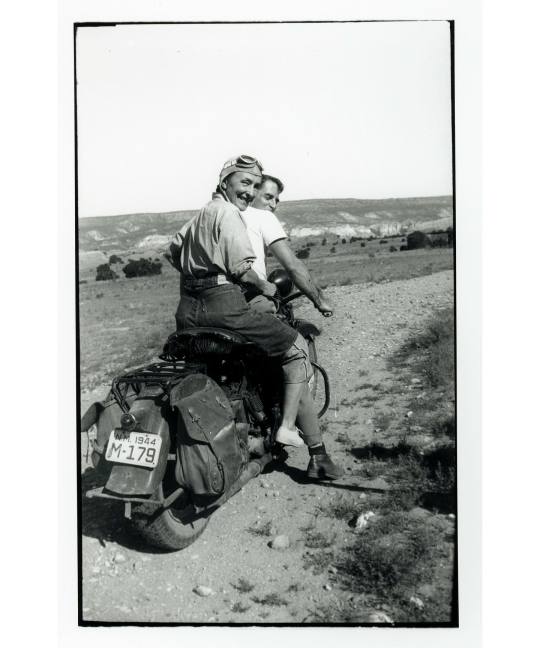
Georgia O'Keeffe & Virginia Woolf
Habiendo interrogado al hombre y al pájaro y a los insectos (porque los peces, cuentan los hombres que para oírlos hablar han vivido años su soledad de verdes cavernas, nunca, nunca lo dicen, y tal vez lo saben por eso mismo), habiendo interrogado a todos ellos sin volvernos más sabios, sino más viejos y más fríos -porque ¿no hemos, acaso, implorado el don de aprisionar en un libro algo tan raro y tan extraño, que uno estuviera listo a jurar que era el sentido de la vida?- fuerza es retroceder y decir directamente al lector que espera, todo trémulo, escuchar qué cosa es la vida: ¡ay! no lo sabemos.
- Virginia Woolf, de Orlando. Ed. Sudamericana (1937) Buenos Aires, 1995 Traducción: Jorge Luis Borges
- Maria Chabot. Georgia O'Keeffe Hitching a Ride to Abiquiu with Maurice Grosser, 1944. Gelatin silver print, 8 x 10. Georgia O'Keeffe Museum. Gift of Maria Chabot. © Georgia O'Keeffe Museum.
12 notes
·
View notes
Photo
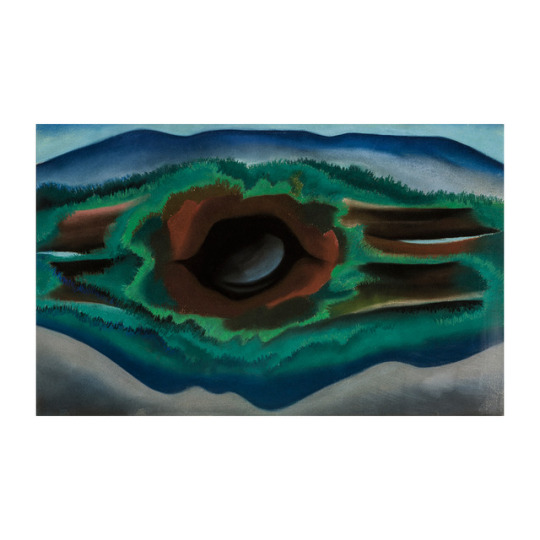
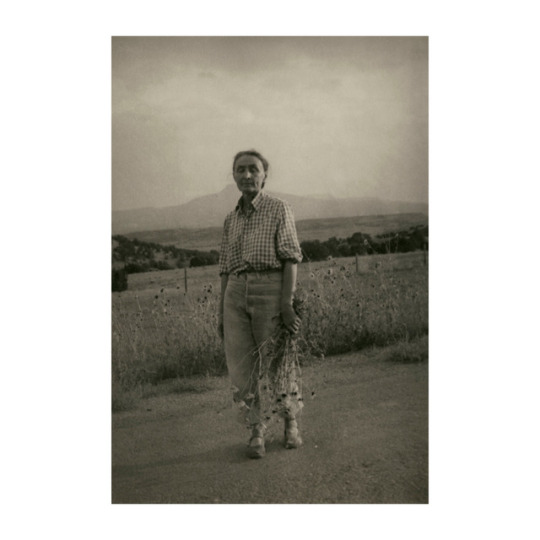
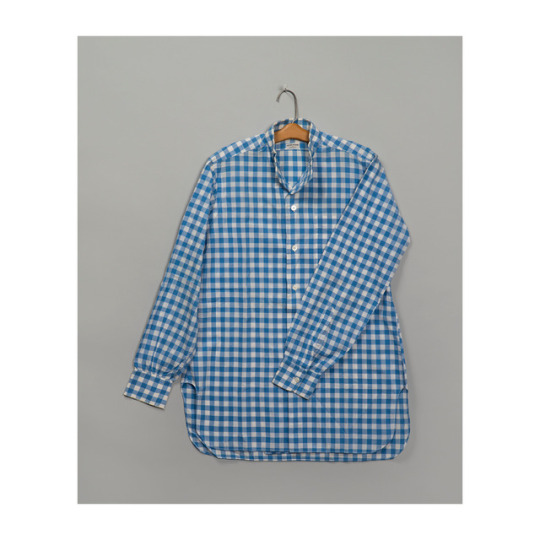
The choice of colors in Georgia O’Keeffe’s art and wardrobe often reflected the tones of the landscapes that surrounded her. During annual visits to Lake George, New York, she painted local bodies of water and their forested surroundings in deep, cool shades of blue, green, and brown.
When she O'Keeffe moved to New Mexico she dressed more casually than she did in New York. She also incorporated more color into her wardrobe. Her city style was structured around dresses, blouses, and skirts in black and white, but in the Southwest she began wearing Levi’s jeans, which she called “the costume of this country.”
O’Keeffe paired her jeans with men’s long-sleeved cotton shirts. One of her favorites was designed by Walter McCrory, a well-known shirtmaker whose customers reportedly included actors, royalty, and politicians, as well as this iconoclastic artist. Its blue and white colorway recalls her paintings of the New Mexico sky.
Posted by Jessica Murphy Artwork: Georgia O’Keeffe (American, 1887–1986). Pool in the Woods, Lake George, 1922. Pastel on paper, 17 x 271⁄2 in. (43.3 x 69.9 cm). Reynolda House Museum of American Art, Winston-Salem, N.C.; Gift of Barbara B. Millhouse in memory of E. Carter, Nancy Susan Reynolds, and Winifred Babcock, 1984.2.9. Courtesy of Reynolda House Museum of American Art, affiliated with Wake Forest University. © Georgia O’Keeffe Museum/Artists Rights Society (ARS), New York Portrait: Maria Chabot (American, 1913–2001). Georgia O’Keeffe, Ghost Ranch, 1944. Photographic print, 5 x 3½ in. (12.7 x 8.9 cm). Georgia O’Keeffe Museum, Santa Fe, N.M.; MS-OKAS-0213j. © Georgia O’Keeffe Museum Wardrobe: Walter McCrory Inc. Shirt, c. late 1940s. Blue and white cotton with woven check. @georgia-okeeffee O’Keeffe Museum; Gift of Juan and Anna Marie Hamilton, 2000.03.0255. (Photo © Gavin Ashworth)
#okeeffemodern#brooklyn museum#georgia o'keeffe#georgia okeeffe#color#art#landscape#wardrobe#clothes#new york#lake george#blue#new mexico#maria chabot#photograph#painting#shirt#walter mccrory#costume#country#highlight
96 notes
·
View notes
Text
LANGS LIJNEN VOLG IK DE REALISTISCHE FANTASIE VAN WESTERINK
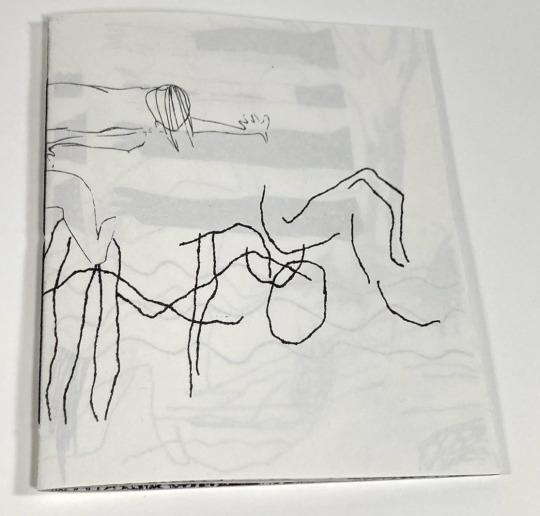
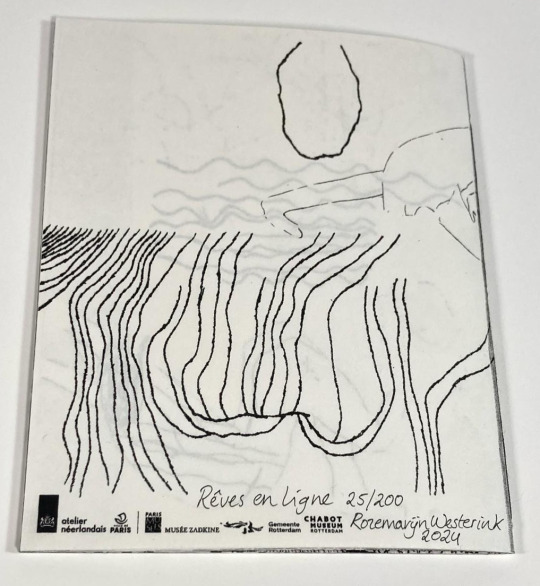
Het figuurlijk gebroken beeld tegen het vergeten is de aanleiding, niet de inspiratie. Het beeld duidt het bombardement van de binnenstad van Rotterdam, omdat de inname van ‘Vesting Holland’ door de Duitsers was mislukt. Na die zwarte 14e mei 1940 gaf de vesting zich beschadigt over. Met de expressieve bronzen sculptuur in een geometrische stijl afgeleid van het kubisme herinnert aan het door oorlogsgeweld gehavende Rotterdam. ‘Een kreet van afschuw tegen de onmenselijke wreedheid van deze beulsdaad’, zei beeldhouwer Ossip Zadkine over zijn ‘verwoeste stad’. De ontredderde figuur heft hoofd en armen ten hemel hopend op een bevrijdende kracht. Armen, benen en handen wijzen in verschillende richtingen, in die dynamiek schreeuwt het beeld de hemel ter verantwoording: ‘waarom?!’. In verwardheid heeft het lichaam steun nodig van een van een boomstronk. Een wankel evenwicht.
Het beeld van Zadkine op het Plein 1940 in Rotterdam is het emotionele logo van verzet in onmacht. Een manier van kunst die na de oorlog een ontworsteling is uit de klauw van de bezetter. Deze had het onmiskenbaar als entartet aangemerkt. Want jazeker, het is ontaard, het figuurlijk silhouet stijgt imposant op boven verschroeide aarde. Het robuust plompe beeld voelt zich het ranke lichaam van de vuurvogel die uit de as verrijst. Dat kunstwerk laat de tijd van het bombardement van Rotterdam herinneren. Het bewaart de menselijke pijn, naar de woorden van de kunstenaar. De pijn die veroorzaakt werd aan een stad die alleen maar het verlangen had te leven en zicht uit te breiden als een woud. ‘Een les voor de toekomst, voor de dageraden van diegenen die jonger zijn dan wij.’
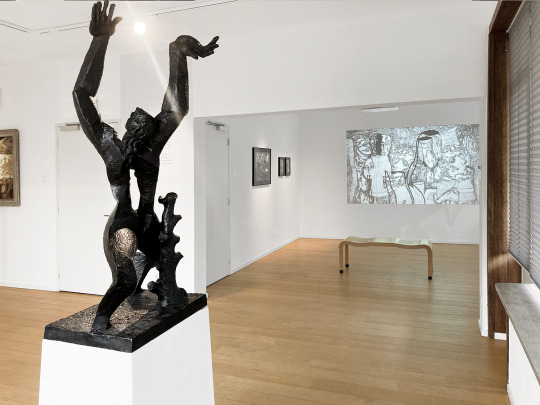
Indirect komen door de contouren van het bewust beschadigde beeld de verschrikkingen en angsten van dat moment in 1940 naar voren. En naar boven voor hen die het hebben meegemaakt. Het zijn er steeds minder. Maar niet deze zwarte dag is letterlijk in het beeld vastgelegd, maar de dagen daarna waarin nieuwe ideeën de stad hebben doen herleven. Het hart en de ingewanden waren bruut uit het lichaam geschoten, het centrum van de stad lag in puin. Het verzet leek gebroken, maar de mens kwam meer slagvaardig uit de strijd en uit hun platgebrande huizen. Dat is wat het beeld is en wil blijven, een opstanding en meteen een vingerwijzing.
Het feit dat het beeld “de verwoeste stad” 70 jaar geleden is onthuld, is grond voor het Atelier Néerlandais en het Musée Zadkine in Parijs een open call voor beeldend kunstenaars in Nederland uit te schrijven. Een oproep een blijvende herinnering te ontwerpen, zoals Zadkine dat destijds heeft gedaan. De generatie kunstenaars van na dat Europese slagveld ging met die geschiedenis aan de slag. Ze kunnen niet zoals Zadkine deed putten uit ervaring, maar laten hun eigen gevoel over de kwestie gaan en tonen emotioneel hun bevindingen in de kunst. Een gedegen jury plukte uit de inzendingen het meest tot de verbeelding sprekende ontwerp. Dit kwam van Rozemarijn Westerink. Zij liet zich inspireren door de verwoeste stad en door andere beelden van Zadkine. Westerink is een tekenaar die met korte arceringen haar fragiele werelden opbouwt. Maar ook kan zij doortastend in enkele lijnen een ingeving uitwerken. Waar Zadkine niet enkel ruimtelijk werk maakt maar ook in het platte vlak uit de voeten kan, zo is het oeuvre van Westerink tweeledig.
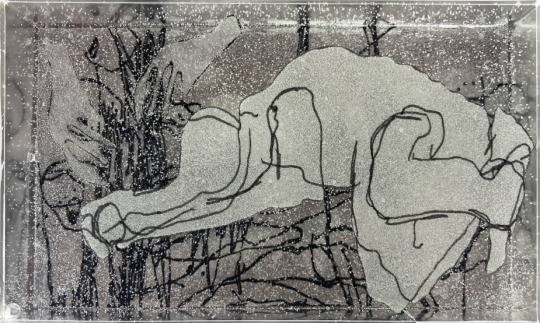
De jury is onder de indruk van de zeggingskracht van het werk van Westerink. Ziet in haar manier van tekenen en door het kijken naar landschappen een evidente verwantschap met Zadkine. Net als de beroemde beeldhouwer put ook zij uit persoonlijke herinneringen om een beeld te scheppen. Een beeld waarbij het menselijk lichaam betekenis krijgt tegen de achtergrond van een veranderende omgeving. Vooral spreekt aan de manier waarop de ontzetting van het beeld aanleiding is voor een korte film waarin planten in de Parijse museumtuin acteren. De animatie plaatst een teken van hoop en heling tegenover moedeloosheid en verwoesting. Volgens het Chabot Museum, waar tekeningen en animatiefilm vervolgens na uitwerking getoond worden tot 3 maart 2024, verbindt dit internationale project verleden en heden en toont de tegenstelling van verscheuring en genezing in een artistieke context.
Naast tekeningen maakt Westerink animatiefilms. De tekeningen zet ze in beweging aan de hand van de stop-motion techniek. De platte afbeelding wordt ruimtelijk begaanbaar. De vlakte komt in actie en geeft toegang aan de fantasie. De kunstenaar laat zich in dit project inspireren door de flora in de tuin van het Parijse museum. Voor Zadkine was zijn tuin heilige grond, een geliefde plek om te verkeren. Hij zocht in zijn werk dikwijls ook een relatie met de natuur. Dat gegeven was voor Westerink vruchtbare grond haar werk te laten groeien. “Rêves en Ligne”, dromen en lijn, noemde ze de beweging. En inderdaad droomt zij daarin langs de lijnen van de tuin, en kan ik mee in haar fantasie bij de werkelijkheid.
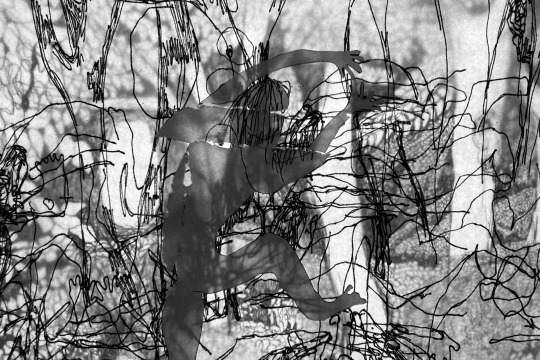
In een ruim 10 minuten durende animatie dwaalt Westerink figuurlijk door de tuin, waar ze tijdens haar verblijf eerst letterlijk aanwezig kon zijn. Armen met grijpende handen drommen samen. Het geeft een dreigende sfeer van het in bezit nemen, maar kan tevens een teken van het vragen om hulp zijn. Handen die reiken en willen aanraken. Zwarte lijnen die rasteren en dichte vlakken vormen verhogen een naargeestige sfeer onderstreept door de onheilspellend meeslepende muziek. Maar er ontstaan witte lijnen van hoop in het ongeluk en het verdriet. Het zijn enkele seconden uit de film, die ook nog tonen dat gebroken lichamen weer handen en voeten krijgen. Dan kunnen verpozen en zich verkwikken in de golven van een meer. Terwijl het project naar aanleiding van “de Verwoeste Stad” zich afzet tegen de verschrikking van de verwoesting, spreekt uit die versteende ontzetting van het beeld ook een mate van hoop en heling. De hoop op een betere wereld waarin de mens leert van zijn verleden; dit nooit meer. En heling, een hersteld stadscentrum.
De animatiefilm gaf Rozemarijn Westerink inspiratie om met dat materiaal een nieuwe compositie op papier te maken. Als een collage van bestaande in de film eerder gebruikte achtergronden en figuraties. Deze vormen het decor voor andere uit de animatie losgetrokken onderdelen of nieuwe uitgezette inspiraties. De figuren staan ook wel solitair in het beeld, maar creëeren over het algemeen een nieuwe voorstelling. Het zijn bewegingloze beelden, lijken op stills uit de film – een stilgezet fragment uit de reeks. Maar het zijn op zichzelf staande tekeningen, illustraties bij een vertelling die zonder tekst in een met de hand gebonden uitgave zich ontvouwt. Blader ik het boekje door dan zie ik toch als het ware een dynamische voorstelling langs mijn blik trekken. Westerink weet de beweging in het statische beeld te krijgen. De figuratie en de figuren dansen bij wijze van spreken over de pagina’s. Staan een moment stil om te genieten van de bloemen en planten in de museumtuin. Bewonderen de beeldhouwwerken van Zadkine in die boomgaard, dat eens zijn tuin was. In het hart van het boekje begeef ik me tussen het struikgewas, de bomen kijken knoestig terug en tussen de bladeren word ik versteende blikken waar. Westerink neemt mij mee langs haar lijn, ik ben opgenomen in haar fantasie.
Rêves en Ligne. Riso geprinte publicatie in beperkte oplage. Rozemarijn Westerink, tekeningen. Onderdeel van project over ‘de verwoeste stad’ van Ossip Zadkine. Tekeningen en animatiefilm te zien in Chabot Museum Rotterdam tot 3 maart 2024.
1 note
·
View note
Photo
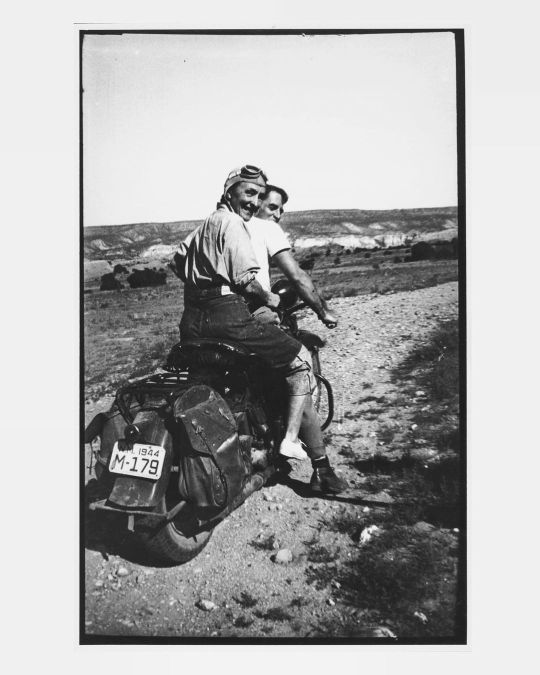
“Georgia O’Keeffe hitching a ride to Abiquiu, Ghost Ranch, 1944″ AKA ”Women Who Rode Away.” –Image by Maria Chabot @Georgia O’Keeffe Museum. The painter, Maurice Grosser, visited his friend O’Keeffe’s ranch in 1944. Maria Chabot photographed O’Keeffe and Grosser on his 1938 Harley-Davidson Knucklehead. That look on O’Keeffe’s face says it all. (at Abiquiu, New Mexico) https://www.instagram.com/p/CHo2RU6lZmA/?igshid=id9zcev1z80y
14 notes
·
View notes
Photo

This 1944 photo, titled "Georgia O'Keeffe, Breakfast, The Black Place," by Maria Chabot is reproduced from the new exhibition catalog from @museothyssen The editors write, "O’Keeffe discovered the stretch of desolate hills she named the "Black Place" in 1937 during a trip to the Bisti Badlands in Navajo country. She made several camping trips there with her assistant Maria Chabot, describing the dark mesas as “a mile of elephants – grey hills all about the same size with almost white sand at their feet.” Over a period of fourteen years the site inspired a flow of works, featuring the jagged cleft dividing the two hills in increasingly abstract forms. Most of the paintings were produced during the Second World War, and they have been connected to aerial views of bombed landscapes that O’Keeffe would have seen in the newspapers. O’Keeffe’s perception of the Black Place as ‘such a beautiful, untouched lonely-feeling place – part of what I call the Far Away’ confirms the sense of bleak poignancy emanating from her depictions of a site Maria Chabot proclaimed was ‘the very heart of darkness.’ Devoid of any human presence, the eroded forms seem to evoke both the genesis of the earth – the land rises up on either side like bent legs before delving into an erotic hollow at the center – and its simultaneous devastation in an apocalyptic future.'" Read more via linkinbio. Image credit: Maria Chabot. Georgia O'Keeffe, Breakfast, The Black Place, 1944. Gelatin silver print. Maria Chabot Archive. Georgia O'Keeffe Museum. Gift of Maria Chabot. © Georgia O'Keeffe Museum. ' @okeeffemuseum #theblackplace #mariachabot #mesa @centrepompidou @fondationbeyeler #georgiaokeeffe #ramshead #newmexico #southwestart https://www.instagram.com/p/CQgwDF0DyzD/?utm_medium=tumblr
6 notes
·
View notes
Photo




Het Chabot Museum (Rotterdam, tegenover museum Boymans van Beuningen) is een mooi voorbeeld van Het Nieuwe Bouwen. Architect G.W. Baas, 1938. Model gebouwd door Peter Lok. Bouwplaat alleen verkrijgbaar bij het Museum, of bij zeistbouwplaten.nl
1 note
·
View note
Photo

Portrait of Madame la Comtesse de Cambaceres (1895). William Bouguereau (French, 1825-1905). Oil on canvas. Seattle Art Museum.
Louise de Rohan Chabot was born in Paris in 1860 and married the Count of Cambacérès in 1886. While working on this portrait, Bouguereau privately complained about the countess’ weak chin and up-tilted nose, so he turned her face toward the viewer to minimize these flaws. Further flattering the sitter are her pose and the setting, which embody the grace and dignity befitting her aristocratic status.
40 notes
·
View notes
